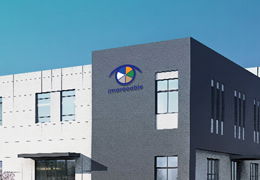Choosing the right fiber optic cabling requires a comprehensive consideration of application scenarios, transmission requirements, environmental conditions, and other factors. The core goal is to ensure the stability, compatibility, and scalability of the fiber optic link. A detailed explanation from key dimensions is as follows:
1. Clarify Application Scenarios and Core Requirements
Different scenarios have significantly different requirements for fiber optic cabling, so it is necessary to first identify the core needs:
Data Centers: Require high density, easy management, and support for high speeds (such as 400G/800G). Priority is given to modular designs (for easy expansion) and compatibility with the interface density of servers and switches.
Telecom/Carrier Rooms: Emphasize high reliability and long-distance transmission (such as metropolitan area networks, backbone networks). Need to be compatible with equipment standards of different operators and support frequent plugging and unplugging (due to high maintenance needs).
Building Structured Cabling: Focus on short distances (≤500 meters) and low-frequency maintenance, balancing cost and ease of use, and may involve wall/ground installation.
Industrial Environments: Require resistance to vibration, dust, and water (such as IP65/IP67), and high and low temperature resistance (-40℃~85℃). The shell needs to be sturdy (such as metal materials).
Outdoor Scenarios: Need corrosion resistance and UV protection. Usually, armored fiber optic distribution units are selected, combined with waterproof connectors.
2. Determine Fiber Type: Single-Mode vs. Multimode
The type of fiber directly determines the transmission distance and rate, and it should be selected according to the link length and bandwidth requirements:
| Type | Transmission Distance | Applicable Speed | Core Characteristics | Typical Scenarios |
| Multimode Fiber | Short distance (≤2km) | 10G/40G (OM3), 100G (OM4) | Thick core diameter (50/62.5μm), low cost, easy coupling, but large dispersion (limiting long distances) | Building cabling, data center interiors (≤500m) |
| Single-Mode Fiber | Long distance (≥2km) | 10G/40G/100G/400G+ | Thin core diameter (9μm), small dispersion, supports high-speed long-distance transmission, but higher cost and high precision requirements for connections | Telecom backbone networks, inter-data center links |
Note: If there is a possibility of upgrading to higher rates (such as 800G) in the future, priority should be given to single-mode fiber (multimode fiber has strict distance limitations at high rates).
3. Choose Interface Type: Match Equipment and Density Requirements
The interface type must be compatible with optical modules, switches, and other equipment, while considering installation density:
LC: A miniaturized interface (only 1/2 the size of SC), with low insertion loss (≤0.2dB), supporting high-density cabling (such as 48 ports/1U patch panels), and is the first choice for data centers.
SC: A square interface, easy to plug and unplug ("plug and play"), with strong anti-pollution ability, commonly used in building cabling and telecom rooms.
ST: A round bayonet interface, commonly used in the early days (such as cable TV networks), but with low density and easy loosening, gradually being phased out.
FC: A round threaded interface with extremely high stability (anti-vibration), but large in size and high in cost, only used in industrial or military scenarios with extreme reliability requirements.
Recommendation: Newly built equipment should preferably choose LC (adapting to high-speed optical modules), and upgrades to old systems can be compatible with original interfaces (such as SC).
4. Selection of Fiber Optic Distribution Frame (ODF) Specifications
The distribution frame is the core carrier of fiber optic cabling, and the following parameters should be paid attention to:
1. **Number of Ports**: Select according to the number of fiber cores (such as 24 cores, 48 cores, 96 cores), and reserve 20%~30% redundancy (to cope with expansion).
2. **Installation Method**:
- Rack-mounted: Suitable for standard cabinets (19 inches), saving space, and preferred for data centers/rooms (such as 1U/2U height).
- Wall-mounted: Suitable for small rooms or corridors, no need for cabinets, but with small capacity (usually ≤24 cores).
3. **Management Functions**:
- Need to be equipped with cable managers (to avoid excessive bending of fibers, with a bending radius ≥30mm) and label slots (to clearly identify link information).
- Modular design (such as drawer-type, plug-in card type) can simplify maintenance and support independent replacement of single modules.
4. **Protection Level**: Industrial/outdoor scenarios require IP65 or higher (dust and water resistance), and IP20 is sufficient for indoor rooms.
5. Compatibility and Standardization
Ensure that cabling components comply with industry standards to avoid "isolated island equipment":
Follow International Standards: Such as TIA-568 (cabling standards) and IEC 61754 (connector standards) to ensure compatibility with equipment of different brands.
Certification Requirements: Priority is given to products that have passed UL (fire protection), CE (safety), and ROHS (environmental protection) certifications. Inferior products may cause signal attenuation (insertion loss >0.5dB) or frequent failures.
6. Balance Between Cost and Scalability
Cost Control: Multimode fibers and accessories (such as OM3/OM4) are cheaper than single-mode, but the judgment should be based on the transmission distance (single-mode has lower comprehensive cost for long distances).
Future Expansion: The distribution frame needs to support "smooth upgrade". For example, if 10G optical modules are used currently, the distribution frame should reserve interface space for 400G optical modules; single-mode fiber is preferred for the fiber type (which can support future 1000G rates).
Summary: Selection Steps
1. Clarify the scenario (room/outdoor/industrial) and transmission requirements (distance, rate);
2. Determine the fiber type (single-mode/multimode) and interface type (LC/SC, etc.);
3. Match the distribution frame specifications (number of ports, installation method, management functions);
4. Verify compatibility (standard certification) and environmental adaptability (protection level);
5. Reserve expansion space and balance cost and performance.
Through the above steps, the fiber optic cabling system can be ensured to be stable and reliable, adapt to current needs, and support future upgrades.









 CN
CN

 Home >
Home > 





